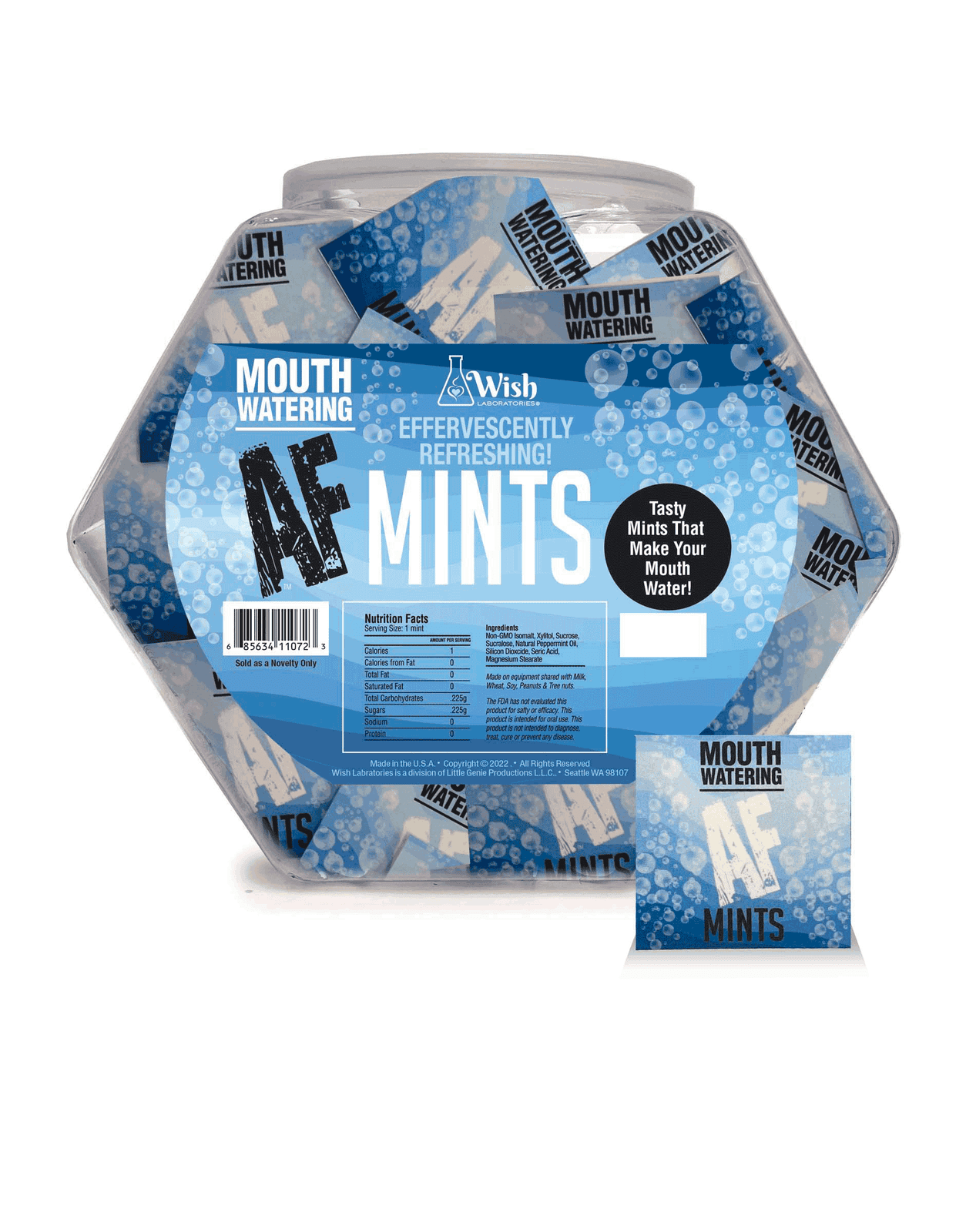Mints To Make Your Mouth Water

A surge in artisanal mint production is sending ripples through the confectionery world, captivating consumers with innovative flavors and unique production methods. Forget mass-produced breath fresheners; a new wave of mints is here, promising to tantalize taste buds and redefine the everyday experience.
This trend, fueled by a desire for natural ingredients and sophisticated taste profiles, is seeing small-batch producers emerge as major players. These new mints are not just for breath freshening; they are a gourmet treat.
The Rise of Artisanal Mints
Artisanal mints are experiencing explosive growth. Market analysis firm FoodWise Trends reported a 35% increase in sales of artisanal mints in the last year alone. This surge indicates a significant shift away from traditional, commercially produced options.
The growth is primarily driven by consumer demand for higher quality ingredients. Many are turning to alternatives that avoid artificial sweeteners and preservatives.
Key Players and Their Innovations
"Mintopia", a Brooklyn-based company, is leading the charge with its ethically sourced peppermint oil and innovative flavor combinations. They have reported a 60% increase in revenue this past quarter.
"Verdant Bites", a small farm in Oregon, specializes in organic mint cultivation. They are known for using unique techniques, such as hydroculture, to improve mints flavour and taste.
"Arctic Fresh", based in Iceland, focuses on unique cool mints utilizing glacial water. They claim superior purity, making their product line a hit among health-conscious consumers.
Ingredients and Sourcing
The hallmark of these artisanal mints is their commitment to natural ingredients. Many producers source their mint leaves directly from local farms. This ensures freshness and supports sustainable agricultural practices.
Organic peppermint, spearmint, and wintergreen are commonly used. Some producers also experiment with unique herbs and spices, such as lavender, ginger, and cardamom.
Production Methods
Handcrafted production is a key characteristic of these artisanal mints. Small batches allow for meticulous attention to detail, ensuring consistent quality and flavor.
Some producers use traditional methods like copper pot distillation to extract essential oils. These methods help to preserve the delicate aromas and flavors of the mint leaves.
Consumer Preferences and Market Trends
Consumers are increasingly seeking out mints that offer a unique sensory experience. Taste, texture, and aroma all play a crucial role in their purchasing decisions. This emphasis on sensory engagement has propelled the artisanal mint industry.
A recent survey by "Taste Test Today" found that 75% of consumers are willing to pay more for mints made with natural ingredients. This demonstrates a growing demand for premium confectionery products.
Another trend is the rise of functional mints infused with vitamins and adaptogens. These provide additional health benefits beyond breath freshening.
Retail and Distribution
Artisanal mints are primarily sold in specialty stores, farmers' markets, and online retailers. Direct-to-consumer sales are also becoming increasingly popular. This allows producers to build relationships with their customers and offer personalized recommendations.
Partnerships with gourmet food shops and high-end cafes are expanding the reach of these products. It allows wider distribution.
"Global Confectionery Insights" predicts a further expansion into mainstream supermarkets in the coming years. This expansion would bring these premium mints to a wider audience.
Challenges and Opportunities
Maintaining consistent quality and scaling production are major challenges facing artisanal mint producers. Sourcing high-quality ingredients can also be difficult, especially during off-season.
However, opportunities abound in the growing health and wellness market. Developing innovative products that cater to specific dietary needs can tap into new consumer segments. This includes sugar-free, vegan, and gluten-free options.
Collaboration with chefs and mixologists presents another avenue for growth. Incorporating artisanal mints into culinary creations and cocktail recipes can enhance their appeal.
Future Outlook
The artisanal mint industry is poised for continued growth. Driven by consumer demand for natural ingredients and unique flavor experiences, this trend is expected to reshape the confectionery landscape.
Consumers should expect to see even more innovation in the coming years. From new flavor combinations to sustainable packaging options, the future of mints is looking bright.
Industry experts at "Confectionery Now" anticipate a 20% annual growth rate for the artisanal mint market over the next five years. This rapid expansion confirms the enduring appeal of these unique, handcrafted treats.












![Mints To Make Your Mouth Water How To Make Your Mouth Water: 9 [Mints, Glands, And Remedies]](https://enqanksv6fg.exactdn.com/storage/2022/08/How-to-Make-Your-Mouth-Water.webp)





